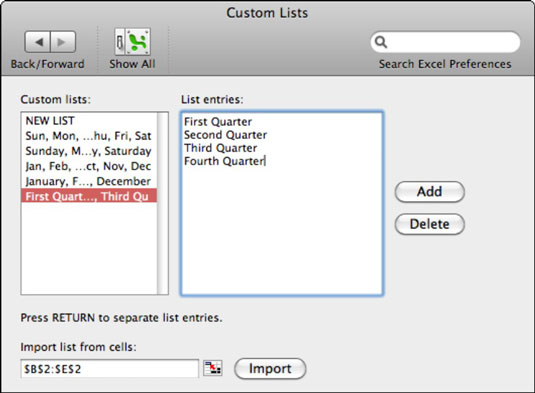
- #Data analysis for mac excel 2011 how to
- #Data analysis for mac excel 2011 for mac
- #Data analysis for mac excel 2011 install
- #Data analysis for mac excel 2011 drivers
- #Data analysis for mac excel 2011 driver
On your sheet, click the cell where you want to place the upper-left corner of the external data range, and then click OK.Įxcel adds a new sheet to your workbook, and automatically pastes the external data range at the upper-left corner of the new sheet. Return the external data to the active sheetĬlick Existing sheet. Copy and paste two continuous groups of data that you want to. In the Returning External Data to Microsoft Excel dialog box, do any of the following:Ĭhoose query definition, refresh control, and data layout optionsĬhange the settings for a parameter query When you have finished, click Return Data to import the data into Excel.įor more information about connecting to a data source and using Microsoft Query, see Microsoft Query Help. Use Microsoft Query to connect to a data source and to create a query. On the Data menu, point to Get External Data, and then click New Database Query. For more information about installing ODBC drivers, see Microsoft Query Help. When you have installed Service Pack 1 (SP1), follow these steps to start Solver: a.
#Data analysis for mac excel 2011 for mac
Microsoft Office for Mac 2011 Service Pack 1. Although mainly targeted at the ultra-geek excel buffs, Frontline Systems also recommends the product.
#Data analysis for mac excel 2011 drivers
For more information, see ODBC drivers that are compatible with Excel for Mac. The new Solver for Excel 2011 has been enhanced over its predecessor (for Excel 2008 for MAC). Compatible ODBC drivers are available from third-party vendors.
#Data analysis for mac excel 2011 driver
To import data from a database, such as Microsoft SQL Server, you must have an ODBC driver that is compatible with Microsoft Query installed on your computer. To ensure the connection is working, enter some data, and then select Data > Refresh All. After you import the data, you can also select Data > Connections, and then in the Connection Properties dialog box, select Properties. To set connection properties on the Usage and Definition tabs of the Properties dialog box, select Properties. When you're ready, select Return Data. The Import Data dialog box appears.Ĭhoose where you want the data to be added: either on the existing sheet, on a new sheet, or in a PivotTable. You can change the SQL statement as you see fit. In the left pane, navigate to the table you want, and then select it.Ĭonfirm the SQL statement on the right pane. Under Authentication, select a method from the list: Username/Password, Kerberos, or NTLM.Įnter credentials in the User Name and Password boxes. Get this information from the database administrator. To do this, select cell A2 and type Order ID.Select Data > Get External Data > New Database Query > SQL Server ODBC. The Connect to SQL Server ODBC Data Source dialog box appears.Įnter the server in the Server Name box, and optionally, enter the database in the Database Name box. Your pivot table should now display the total quantity for each Order ID as follows:įinally, we want the title in cell A2 to show as "Order ID" instead of "Row Labels". Next under the Values box, click on the "Sum of Order ID" and drag it to the Row Labels box.

This is done by selecting Office Button > Excel Options > Add-Ins in Excel 2007 or File > HelpOptions > Add-Ins in Excel 2010/2013, and clicking the Go button at the bottom of the window.
#Data analysis for mac excel 2011 install
If this option is not visible you may need to first install Excel’s analysis tool pack.

In this example, we've selected the checkboxes next to the Order ID and Quantity fields. Yes, starting with Excel for Mac 2011, Service Pack 1 (version 14.1.0) Excel. In the PivotTable Builder window, choose the fields to add to the report. Your pivot table should now appear as follows: In this example, we clicked on the "Existing worksheet" option and set the location to Sheet2!$A$1. Next, select where you wish to place the PivotTable.

You can enjoy this class with Excel 2007, Excel 2010, Excel 2013, Excel 2016, Office 365, Excel 2019, Excel 2011 for Mac, Excel 2014 for Mac. In this example, we've chosen cells A1 to D13 in Sheet1. I am using Excel 365 / Excel 2016 / 2013 to demonstrate all the techniques. Select the range of data for the pivot table and click on the OK button. Click on the PivotTable button and select Create Manual PivotTable from the popup menu.Ī Create PivotTable window should appear. Next, select the Data tab from the toolbar at the top of the screen. In this example, we've selected cell A1 on Sheet2.
#Data analysis for mac excel 2011 how to
How to Add Analysis ToolPak to Excel 2016 in. Highlight the cell where you'd like to see the pivot table. Analysis toolPak of excel contains very helpful tools for statistical, financial, and engineering data analysis. Question: How do I create a pivot table in Microsoft Excel 2011 for Mac?Īnswer: In this example, the data for the pivot table resides on Sheet1.


 0 kommentar(er)
0 kommentar(er)
